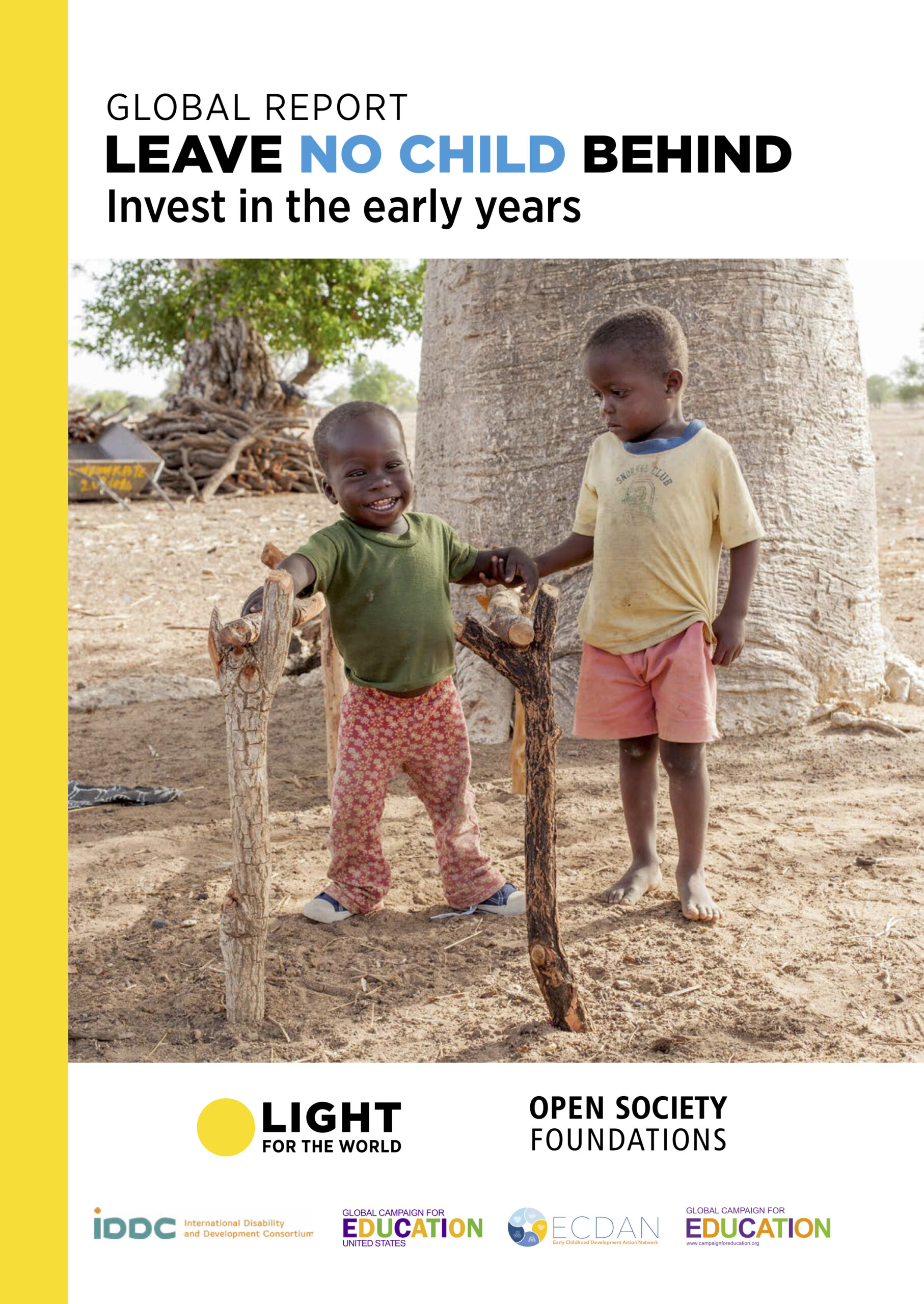
Millions of children under the age of five in low- and middle-income countries are at high risk of not achieving their full potential. Multiple factors influence this risk, including health, nutrition, security and safety, responsive caregiving, early learning opportunities, and access to safe water, sanitation and other basic services. High-quality and timely early childhood interventions (ECI) as well as equitable and inclusive early childhood development (ECD) can help mitigate this risk and smooth the pathway for the most marginalised children to access their rights.
These reports are part of an extensive research project made possible with generous funding by the Early Childhood Programme of the Open Society Foundations.
It provides an overview and new findings on the state of inclusive early childhood development (ECD) in sub-Saharan Africa, the region with the highest proportion of children at risk of not meeting their developmental milestones.
The research focused on 4 countries in sub-Saharan Africa: Burkina Faso, Mozambique, Zambia, Zimbabwe.
10 donors were analysed in terms of their investment in early childhood development: Belgium, Canada, France, Germany, United States; European Union, Global Partnership for Education, World Bank, UNICEF.
All Documents are accessible and listed in the following manner:
- Summary Report
- Global Report
- Recipient Country Case Studies
- Donor Profiles
Authors: Light for the World, IDDC, Open Society Foundations, Global Campaign for Education, ECDAN
Year of Publication: 2021
Leave No Child Behind Summary Report English
pdf – 1 MB
Leave No Child Behind Summary Report French
pdf – 1 MB
Leave No Child Behind Summary Report Portuguese
pdf – 1 MB
Leave No Child Behind Global Report English
pdf – 6 MB
Leave No Child Behind Country Case Study Burkina Faso English
pdf – 3 MB
Leave No Child Behind Country Case Study Burkina Faso French
pdf – 2 MB
Leave No Child Behind Country Case Study Mozambique English
pdf – 2 MB
Leave No Child Behind Country Case Study Mozambique Portuguese
pdf – 2 MB
Leave No Child Behind Country Case Study Zambia English
pdf – 2 MB
Leave No Child Behind Country Case Study Zimbabwe English
pdf – 2 MB
Leave No Child Behind Donor Profile Worldbank English
pdf – 168 KB
Leave No Child Behind Donor Profile Worldbank French
pdf – 372 KB
Leave No Child Behind Donor Profile Worldbank Portuguese
pdf – 373 KB
Leave No Child Behind Donor Profile UNICEF English
pdf – 89 KB
Leave No Child Behind Donor Profile UNICEF French
pdf – 435 KB
Leave No Child Behind Donor Profile UNICEF Portuguese
pdf – 464 KB
Leave No Child Behind Donor Profile GPE English
pdf – 137 KB
Leave No Child Behind Donor Profile GPE French
pdf – 152 KB
Leave No Child Behind Donor Profile GPE Portuguese
pdf – 239 KB
Leave No Child Behind Donor Profile EU English
pdf – 158 KB
Leave No Child Behind Donor Profile EU French
pdf – 373 KB
Leave No Child Behind Donor Profile EU Portuguese
pdf – 349 KB
Leave No Child Behind Donor Profile Canada English
pdf – 193 KB
Leave No Child Behind Donor Profile Canada French
pdf – 394 KB
Leave No Child Behind Donor Profile Canada Portuguese
pdf – 390 KB
Leave No Child Behind Donor Profile Belgium English
pdf – 120 KB
Leave No Child Behind Donor Profile Belgium French
pdf – 346 KB
Leave No Child Behind Donor Profile Belgium Portuguese
pdf – 317 KB
Leave No Child Behind Donor Profile Germany English
pdf – 182 KB
Leave No Child Behind Donor Profile Germany French
pdf – 206 KB
Leave No Child Behind Donor Profile Germany Portuguese
pdf – 289 KB
Leave No Child Behind Donor Profile UK English
pdf – 108 KB
Leave No Child Behind Donor Profile UK French
pdf – 473 KB
Leave No Child Behind Donor Profile UK Portuguese
pdf – 523 KB
Leave No Child Behind Donor Profile US Aid English
pdf – 133 KB
Leave No Child Behind Donor Profile US Aid French
pdf – 301 KB
Leave No Child Behind Donor Profile US Aid Portuguese
pdf – 311 KB
Leave No Child Behind Donor Profile France English
pdf – 104 KB
Leave No Child Behind Donor Profile France French
pdf – 225 KB
Leave No Child Behind Donor Profile France Portuguese
pdf – 296 KB
